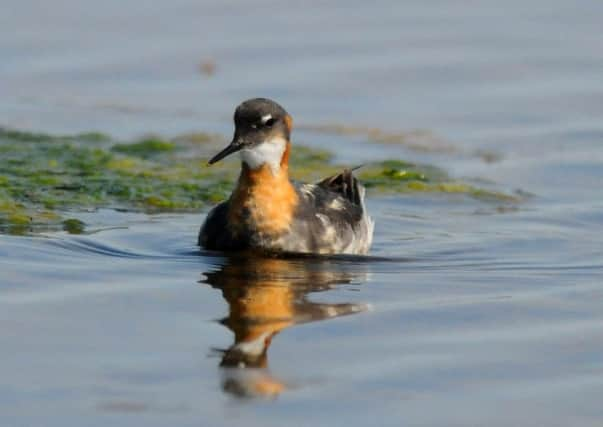Fifty years of ups and downs noted in 2016 anniversary year


Part of the warden’s job each year is counting the numbers of breeding birds, here are some of the results.
The presence of the rare red – necked phalaropes was one of the reasons the North Uist reserve was initially set up in 1966.
Advertisement
Hide AdAdvertisement
Hide AdIt is one of a few species where the male takes on the responsibility of egg incubating and rears the chicks alone.
They bred sporadically at Balranald until 1984 and then disappeared until a pair re-appeared and reared young in 2015.
They are really a bird of the Arctic and only breed in the Western Isles and Shetland with these Scottish archipelagos being on the very edge of their breeding range.
The other rare bird, corncrakes have more than doubled their numbers in the 50 years of Balranald.
Advertisement
Hide AdAdvertisement
Hide AdThey are a great success story of collaboration between conservationists and crofters.
A relative of the corncrake, the coot has not done so well.
In the 1970’s and 80’s up to 12 pairs bred annually on the lochs and waterways around the reserve but now there are none.
The decline has occurred throughout the islands and coots are only found on a few machair lochs now.
Advertisement
Hide AdAdvertisement
Hide AdThere are plenty of coots on the mainland and so at present their decline here is not a cause for concern.
Corn buntings, are another bird that has not faired very well, numbers are only a quarter of what they were 50 years ago.
They have struggled across the country and the small Uist population is one of only a few left.
Changes in farming and crofting practices have caused the down turn.
Advertisement
Hide AdAdvertisement
Hide AdThe Uist population has suffered due to the change from traditional corn harvesting to big bale arable silage.
Traditionally harvested corn fed to cattle over winter supplied lots of spilt ripe seed for the buntings, unfortunately they are not so keen on silage, and their numbers are still dropping.
It is not all doom and gloom as three new species have started to breed on the reserve in the last few years.
Swallows the heralder of summer, now breed regularly in any sheds or barns they can get access into.
Advertisement
Hide AdAdvertisement
Hide AdThe closely related sand martin has also colonised recently, they dig tunnels into sand banks for nesting.
Both these species are migrants from Africa and come here to feed on flies and other insects that are abundant on the machair in the summer.
Linnets, a small chestnut, grey and pink finch has also colonised the reserve, they stay here all year round and feed on seeds.
It will be interesting to see what happens during the next 50 years.
Pictured is the Red Necked Phalarope (female) which is really a bird of the Arctic with the Islands on the very edge of their breeding range.